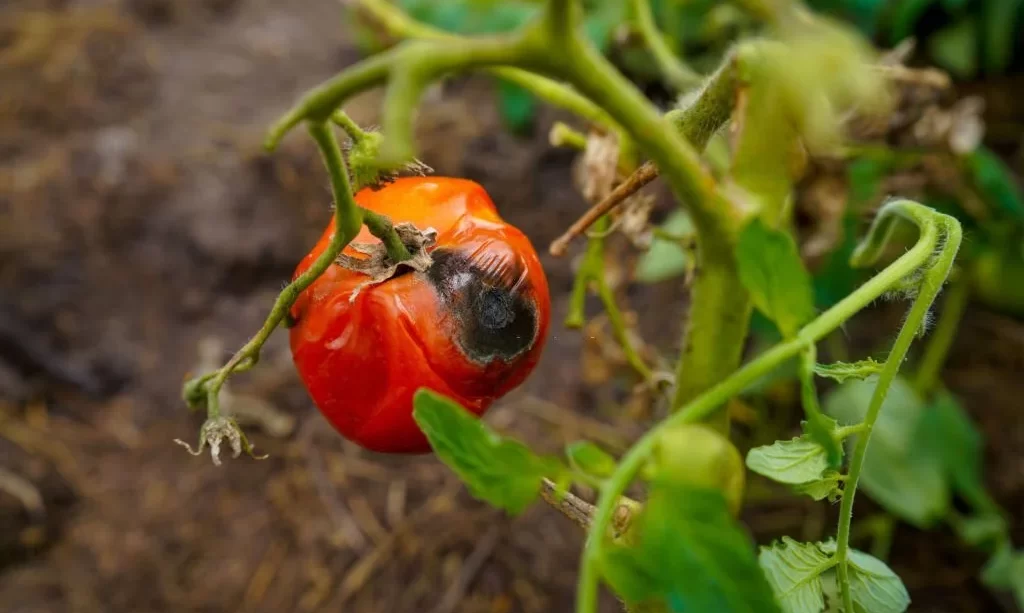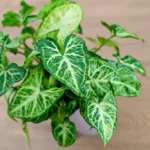Tomatoes are a popular and cherished addition to many home gardens, offering juicy and flavorful fruits for various dishes. However, it can be disheartening to find your tomatoes developing black, sunken areas at their bottoms. This phenomenon, often referred to as “blossom end rot,” can be a source of frustration for gardeners. In this article, we’ll delve into the causes behind this issue and explore how you can prevent it to enjoy a bountiful tomato harvest.
- FOR USE ON: Use Tomato-tone organic fertilizer for all types of tomatoes; both heirloom and hybrid. It Produces plump, abundant tomatoes, not unwanted foliage. Can also be used on all vegetables.
- CONTAINS: Tomato-tone is a rich blend of the finest natural & organic ingredients enhanced with our exclusive Bio-tone formula; 3-4-6 Fertilizer analysis with 8% calcium to help prevent blossom end rot. Tomato-tone is environmentally Safe – No sludges or toxic ingredients.
- WHEN / HOW TO USE: Best to use Tomato-tone fertilizer every two weeks through the growing season. Apply to the soil around the drip line of the plant and then water thoroughly. Tomato-tone is ready to use and requires no mixing.
- FOR ORGANIC GARDENING: Tomato-tone is approved for organic gardening; It is a registered Organic Input Material meaning it meets all requirements for organic production.
- MADE IN THE USA: Product of the Espoma Company. The leader in natural organics since 1929
Causes of Black Bottom Tomatoes
Blossom end rot is not a disease caused by pathogens, but rather a physiological disorder that affects the fruit’s development. At its core, the problem lies in a calcium deficiency within the developing tomato fruit. Calcium is a vital nutrient for cell structure and growth, and when it is lacking, it can lead to the characteristic blackened and sunken patches at the blossom end.
Understanding the reasons behind this calcium deficiency is crucial for preventing blossom end rot and ensuring your tomatoes grow healthy and vibrant. Let’s delve deeper into these causes and explore how they impact your tomato plants.
Lack of Calcium
Calcium is an essential nutrient for proper cell development in plants. When there’s not enough calcium available in the soil, the developing tomato fruits can’t form strong cell walls. As a result, the cells break down, leading to the dark and sunken patches seen on the bottom of the tomatoes. It’s important to note that even if there’s sufficient calcium in the soil, other factors can still prevent its uptake by the plant’s roots.
Uneven Watering
Consistent and balanced watering is crucial for healthy tomato plants. Fluctuations in soil moisture levels can disrupt the plant’s ability to take up calcium and other nutrients. When the soil becomes too dry and then suddenly too wet, the plant’s roots can’t absorb calcium efficiently. This uneven water supply can contribute to the development of blossom end rot.
To prevent these issues and ensure your tomatoes grow without the unsightly black spots, it’s essential to address these factors and provide your plants with the care they need. Let’s explore some strategies to help you overcome blossom end rot and enjoy a thriving tomato harvest.
pH Imbalance
The pH level of the soil plays a significant role in nutrient availability. When the soil pH is too high or too low, it can affect the plant’s ability to absorb calcium effectively. An imbalanced pH can lead to calcium deficiency, which in turn contributes to blossom end rot in tomatoes.
- AMP UP YOUR GARDEN’S GROWTH: Transform your plants with this organic vegetable fertilizer for tomatoes. This dry vegetable plant fertilizer outdoor is perfect for tomatoes, veggies, soft fruits, and berries, providing essential nutrients for robust garden
- NUTRIENT-RICH GARDEN REVITALIZER: With a 5-7-3 ratio, our organic fertilizer for vegetables with high phosphorus brings robust fruits and flowers, and delivers nitrogen for vigorous growth. Perfect for supporting plants throughout every growing stage
- ROOT REVIVAL WITH MYCORRHIZAL FUNGI: Infused with mycorrhizal fungi, this vegetable plant food for tomatoes boosts root strength by enhancing water and nutrient uptake. The fungi establish a beneficial network in the soil, resulting in resilient tree
- CALCIUM FOR ENDURING PLANT HEALTH: Enriched with calcium, Fox Farm fertilizers’ flower food helps strengthen cell walls, enhancing your plants’ ability to resist diseases. A healthier structure leads to increased resilience and longevity in your garden
- ORGANIC GARDENING ESSENTIAL: Our veggie fertilizer for vegetable garden is designed for organic gardening, embracing eco-friendly practices to naturally nourish your plants. It ensures a thriving garden by sustainably delivering essential nutrients
Prevention and Solutions
To prevent tomatoes from turning black on the bottom, there are several steps you can take:
- Soil Testing: Start by testing the pH of your soil. You can use a simple soil testing kit available at garden centers. If the pH is too high or too low, you can adjust it by adding lime to raise pH or sulfur to lower it.
- Consistent Watering: Maintain consistent and even moisture levels in the soil. Water deeply and regularly to ensure the roots can access water and nutrients consistently. Mulching around the plants can help retain soil moisture.
- Calcium Supplementation: If you suspect a calcium deficiency, you can provide supplemental calcium to the plants. Crushed eggshells or agricultural lime are natural sources of calcium that can be added to the soil.
- Fertilization: Ensure your tomato plants receive a balanced fertilizer that includes essential nutrients, including calcium. Balanced nutrition helps prevent nutrient deficiencies that contribute to blossom end rot.
Conclusion
Tomatoes turning black on the bottom, known as blossom end rot, can be a frustrating issue for gardeners. However, by understanding the causes, such as pH imbalance, and taking proactive steps to prevent and address the problem, you can enjoy a bountiful harvest of healthy and delicious tomatoes. With proper soil care, watering practices, and nutrient management, you’ll be on your way to growing tomatoes that are free from this common issue.





